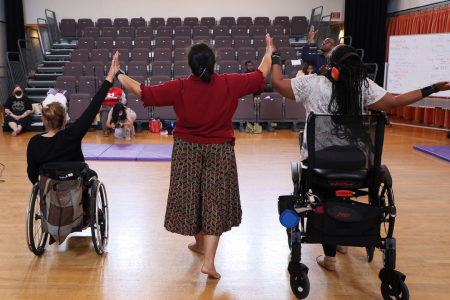UCLA creates first disability studies major at a California public university
Key takeaways
- UCLA has launched a disability studies major, the first of its kind at a public university in California.
- The major, created 16 years after the existing minor was formed, accepted its first students in fall 2023.
- Two new faculty hires will expand the capacity of the program, which also includes several professors from the arts.
Thanks in part to the overwhelming popularity of UCLA’s 16-year-old disability studies minor, the campus has launched a new disability studies interdepartmental major — the first such major at any California public university.
The new major accepted its first students in fall quarter of 2023, and two new faculty hires will expand the capacity of the program from the existing minor, formed in 2007.
While many schools across the country offer applied programs focused on rehabilitation, diagnosis and services, they tend to view disability as a problem to be fixed or repaired. These programs often ignore the ways disability is generated and reinforced by society, as well as the positive role of disability culture in creating a more inclusive society, said choreography professor Victoria Marks. She is chair of the new major and faculty director of the Dancing Disability Lab with the department of world arts and cultures/dance within the UCLA School of the Arts and Architecture.
“As an academic discipline, disability studies considers corporeal diversity, not as something to repair or fix, but as an intersectional identity that is constructed by how we shape access, how we build our cities and write our laws,” Marks said. “UCLA’s new major becomes one of only a handful of programs to examine disability as a historical, social, cultural and political experience, and to consider the way societies, cultures, institutions, spaces and mindsets produce disability systemically and socially.”
As an example, Marks pointed to curb cuts, the ramps at street corners and intersections. Before the Americans with Disabilities Act was passed by Congress in 1990, ramps weren’t required, and curbs were barriers for anyone who couldn’t readily climb a step. The ADA-enforced curb cuts removed those obstacles not only for people who regularly or temporarily need wheelchairs or other mobility devices, but also for parents with strollers, shoppers with carts, bicyclists and more.




 David Esquivel/UCLA
David Esquivel/UCLA